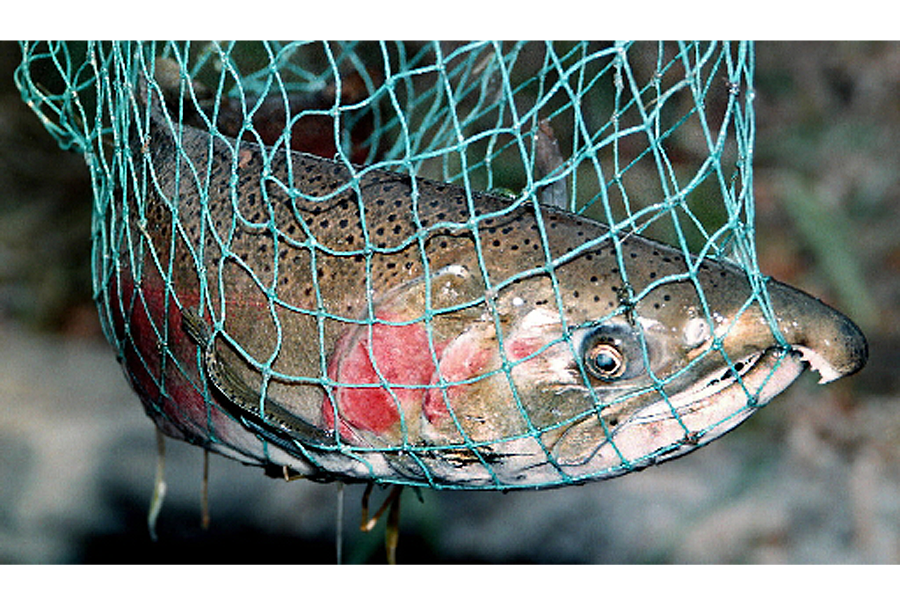Ice age Alaskans dined on salmon 11,500 years ago, say researchers
Loading...
Contrary to popular theories, people living during the last ice age ate more than woolly mammoths, bison, and other large game.
Fish was also on the menu for some ancient Alaskans, say scientists.
Some 11,500 years ago, the meat was picked clean from salmon bones by people living in interior Alaska. Archeologists recently unearthed these bones to recover the oldest evidence of human use of salmon in North America yet.
“Salmon use seems to have deep use in northwest North America,” says study co-author Ben Potter, an archaeologist at the University of Alaska Fairbanks.
“The implications are quite profound,” Dr. Potter says. It doesn't just indicate what humans ate but where they might have traveled and lived. “With this entree on the menu of Paleoindians, that potentially can influence where they’re going, when they’re going there and the kind of resource exploitation that they’re using.”
Discovered at a dig site focused on a cooking hearth and human burials, the salmon bones trump previous evidence of the fishy meal by over 6,000 years, according to a study published Monday in Proceedings of the National Academy of Sciences. These bones were found buried in a structure, apparently a home, previously dated at about 11,500 years old.
The next oldest evidence was found on the coast, not the interior, and dated back just 5,000 years from present.
Some 870 miles from the mouth of the Yukon river sits the Upward Sun River Site, the archaeological dig site. The Tanana River, which feeds into the Yukon, is nearby.
The salmon would have traveled upriver from the ocean to spawn, where they would have met their fate.
Salmon still run in the same region today, say researchers. They’re even the same type of salmon: chum salmon.
Researchers identified the species using DNA and stable isotope analysis from salmon vertebrae bones.
The fish bones don’t only tell the tale of the chum salmon’s spawning history. They also could help map human migrations and use of resources at the time. Because of the extensive salmon run, these chum salmon could indicate where people might have been. The foraging population would have moved towards an abundant resource if they knew the salmon were there.
“It suggests a mapping onto the environment” on the part of the humans, says Potter.
Knowing that the people were catching salmon at the time indicates to scientists this possibility of migration.
Furthermore, the massive spawning trek indicates that people could have been eating salmon earlier than 11,500 years ago as well. Along the rivers that were not blocked off by ice, civilizations could have found sustenance in salmon even earlier than the people of the Upward Sun River Site.
“It’s a tantalizing possibility that salmon might have been important,” says co-author Carrin Halffman, a biological anthropologist at the University of Alaska Fairbanks. But, she adds, “We don’t know what that early salmon use might have looked like.” Yet. The researchers plan to explore these ancient humans’ changing use of the salmon in further work.
“We have so little data on fishing,” says Potter. Dr. Halffman explains that few fish bones survive from such times due to their small size and the gravelly nature of the riverbeds where they die after spawning.
Fish were just part of this group’s diet. There was also evidence of ground squirrel, hare, grouse and other small game at the hearth.
“They were taking advantage of a broad spectrum of resources,” says Halffman. These foragers were likely opportunistic in their food choices.
These chum salmon bones may do more than tell of ice age humans’ diets.
Future research will examine possible links between changing climates and the quantity of salmon in the region. “That’s a situation we’re facing today,” Halffman says. Alaskan salmon abundances are changing and that’s having an economic impact.
By studying these ancient salmon bones and the people that ate their meat, those fluctuations could be mapped by researchers and possibly mitigated.









